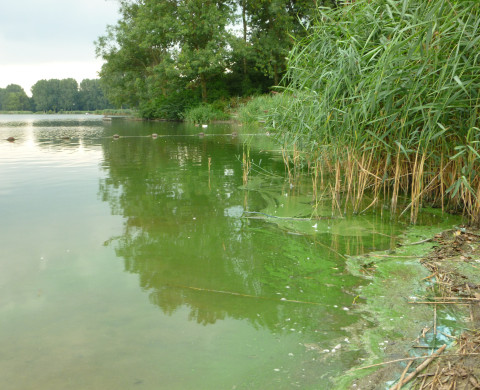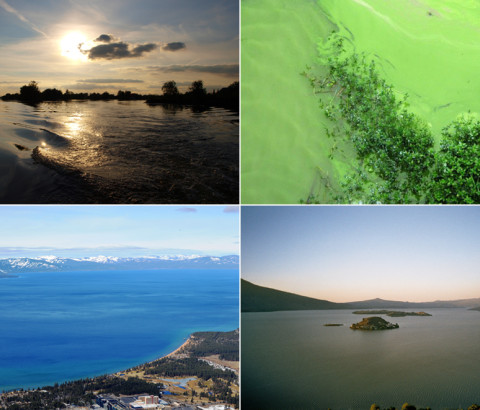Dealing with bluegreen algae
Worldwide, excessive nutrient loads in lakes and reservoirs have led to the rapid increase of harmful cyanobacteria. Blooms of these algae block the use of surface water for drinking, irrigation and recreation. Climate change is expected to further increase the frequency, duration, and magnitude of cyanobacterial blooms. Aquatic ecologists from NIOO are busy gaining more detailed insights into cyanobacterial blooms across scales, in future climates and in respect to toxicity.

©
Dedmer van de Waal / NIOO-KNAW
We study the cellular physiology under controlled laboratory conditions, but also the dynamics of populations and communities in natural systems. From short-term processes like eutrophication to long-term climate change using lake sediment records. With our research, we aim for mechanistic ecological understanding that can contribute to management actions.
The BLOOMTOX project (ERC Consolidator Grant) is aimed at understanding the combined effects of eutrophication and climate change on harmful cyanobacterial bloom toxicity.
Experts
-
Dedmer Van de Waal
Senior Researcher , Aquatic Ecology
-
Lisette de Senerpont Domis
Senior Researcher , AKWA (Aquatic Knowledge Centre Wageningen) | Aquatic Ecology
-
Suzanne McGowan
Head of department , Aquatic Ecology
-
Sven Teurlincx
Project Manager | Researcher , AKWA (Aquatic Knowledge Centre Wageningen) | Aquatic Ecology
-
Annemieke Drost
PhD Candidate , Aquatic Ecology
-
Savannah Sarkis
PhD Candidate , Aquatic Ecology -
Arnaud Louchart
Postdoc , Aquatic Ecology
-
Chaohong (Harley) Lin
PhD Candidate , Aquatic Ecology
Applications
- Water management
- Water policy
- Climate policy




